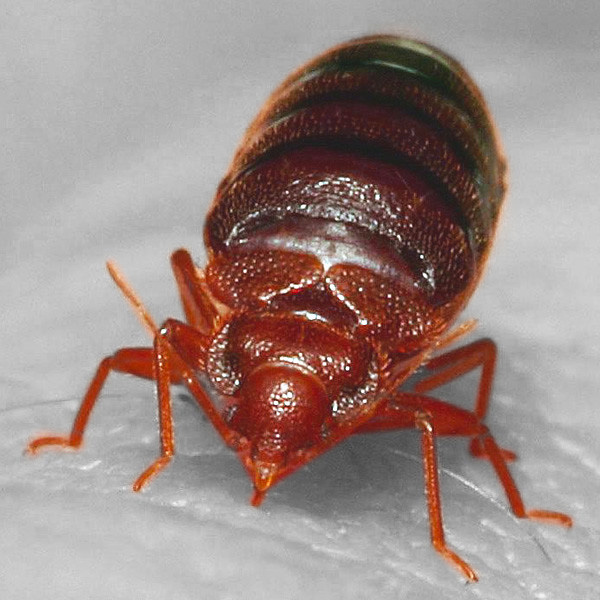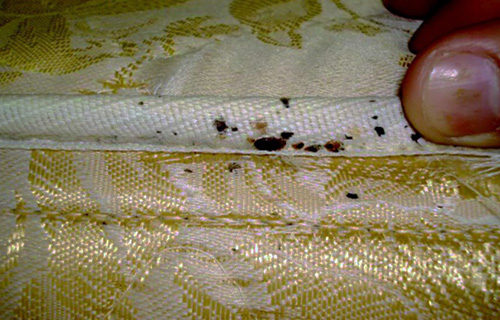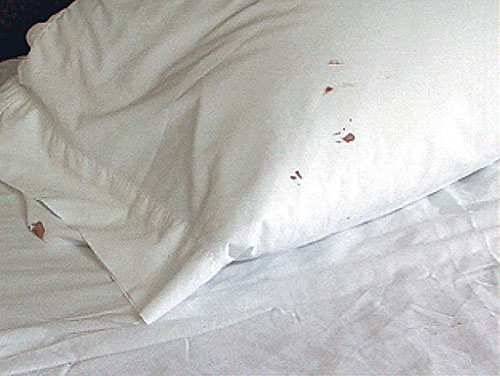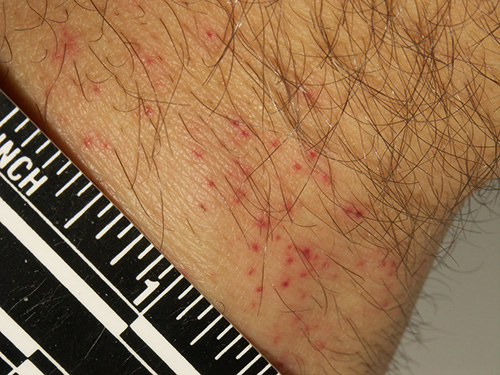
Very much like the vampires of lore, bed bugs not only want to feed on your blood, but they also inject saliva that contains an anesthetic and an anti-clotting agent so your blood with flow freely. You won’t feel a thing. Drawn by your body heat and the carbon dioxide you exhale, which also means you are easier to locate, bed bugs will feed on you for about 10 minutes and leave to digest.
Bed bugs like mattresses because they make ideal places to hide and are near their main food source, you.
Signs of Bed Bugs:
- You can see the bed bugs themselves, or their fecal droppings in mattress seams and other items in the bedroom.

- Blood drops on sheets.

- Bites on your skin.

They are called bed bugs as they are often found hiding in the edging of the mattress or bedding. While they aren’t big, roughly 5-7 mm. long and 2-3 mm. wide, they are still visible to the naked eye. While they are called bed bugs, there are several ways they get into your home:
- Furniture purchased from thrift stores or consignment shops. Always check along the seams and underneath to make sure the only thing that comes home with you, is the furniture.
- Staying overnight away from home, even 5-star hotels have been found to have bed bugs. Hostels, any type of hotel, all can have bed bugs. They are also found in hospitals, offices, retail stores and libraries. When traveling put your luggage up off the ground and check the seams along the mattress. If you see any evidence of bed bugs themselves or small droplets of blood, request a room change.
- Bed bugs are excellent hitchhikers. They will attach themselves to backpacks, purses, clothing, laptop bags, and luggage.
Bed bugs are not attracted to fecal matter and have little to do with places that are dirty.
According to the Bureau of Epidemiology of Utah:
- Bed bugs cannot transmit diseases to humans.
- It has been shown that one person can have an immediate reaction to the bite of a bed bug, probably an allergic reaction, while someone else has no reaction.
- Bed bugs can be killed by cold temperatures. While that is true, the freezing temperatures must be for an extended period.
They are found in all fifty states, and while they are more likely to be found in urban areas due to increased hitchhiking, which increases their rapid spread; rural areas suffer as well. They can live without feeding for several months, hanging out in suitcases, furniture, and bags. They can survive freezing temperatures as well as extreme heat. Hiring the professionals at Victoria’s Pest Control is the best way of resolving your bed bug issues.
They are called bed bugs but will hide in picture frames, box springs, mattress crevices, behind electrical switch plates, and even behind wallpaper during the day. But at nighttime, the carbon dioxide we exhale often coaxes them out of their hiding spots. They are predictable, when a host is found, bed bugs will feed for five to 10 minutes until full. The bites if there are any, will often be in a cluster. They will then hide and digest for about a week. While they do not feed at this time, they will mate and lay eggs.
If you find signs of bed bugs, don’t try to get rid of them alone. After calling for a professional’s help, take these steps:
- Wash all bedclothes on the hottest water setting, and dry on high as well.
- Buy bed bug interceptor cups, these go around each bed footing. Sprinkle with talcum powder. They are sloped so when bed bugs fall in, they cannot climb out.
- Vacuum and toss the vacuum bag after you have sealed it when you are done.
Having the professionals at Victoria’s Pest Control in the survey what needs to do is the fastest way to enjoying your home in peace again.



















Recent Comments